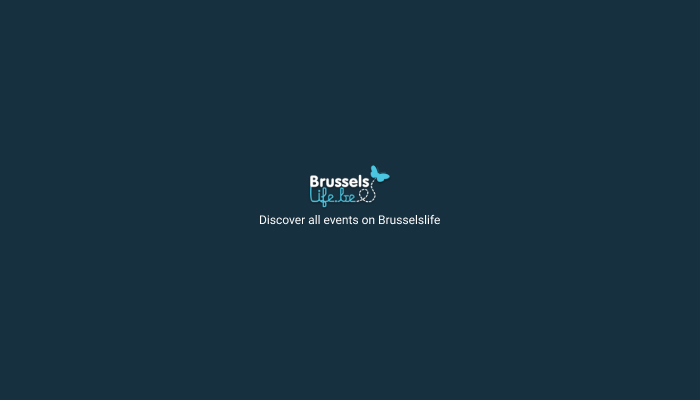Bruxelles Sauvage, a story of humans and wild animals
17 Nov 2014 - 17 Nov 2014

Even if you’ve never seen one with your own eyes, you probably know somebody who knows somebody who’s seen a fox in Brussels. For Bernard Crutzen, his first encounter occurred one night in 2009. While riding his bike home, he came across a red bundle of fir facing him. He was taken aback by this surrealist situation. The idea for his film was born. In Crutzen’s own words, the film would tell the story of “the strange encounter between a European capital and the wild animals that walk all over it.”
Bernard Crutzen, the director

Originally from Verviers, Bernard Crutzen called Brussels home just after finishing school in 1985. A seven year stay in the Reunion Island distanced him from the capital up until 2007. At the same time, his career as a director guided him all over the world. His documentaries deal with Somali pirates, mountain ranges under the Indian Ocean, herds of Madagascan cattle, and other Magritte-esque exploits. Today, Bernard Crutzen is changing his camera lens and is going out on the hunt for the wild animals of Brussels with his movie, “Bruxelles Sauvage” (in English, Wild Brussels).
Wild Brussels, the concept
“Bruxelles Sauvage” is not an animal documentary. The film is more like a documentary of society told in the first person. The director questions himself about the place of animals in the city. “I wanted to ask the question of cohabitation. Bernard Crutzen explains, “How can man and animal live together with fear on one end and fascination on the other? And further, I wanted to highlight the political aspect of this subject!”
More than just foxes
All kinds of wild animals in Brussels spent some time in front of the camera, but foxes have the starring role. “It is estimated that there are 1 million foxes in Brussels, even though no study has confirmed this number. They wander mostly around the Auderghem and Uccle communes.”
Other than the fox, the director addressed the issue of toads in the Sablon, rabbits in Koekelberg, garter snakes in Jette, garden dormice in Schaerbeek…
A human story at the root
If you were to ask Bernard Crutzen how he was able to get images of the animals that you would have never guessed to exist in Brussels, he’ll tell you, “To approach these animals, you first have to approach the Brusseleirs who feed them or live near them.” To find these people, it happens by word of mouth. “This makes sense in a friendly city like Brussels where everyone knows each other. For example I explained my project to my friend who’s a nurse. She told me about a lady she was taking care of who fed a fox in her kitchen every day. Little by little the idea spread by word of mouth, and the project got big enough that I was able to continue filming for 2 years.”
For Bernard Crutzen, his project was just as much a human adventure as a face-to-face with wild animals. “I loved working with the people of Brussels. I had the opportunity to meet people I would have never thought I’d talk to: an agent from Bruxelles-Proprete who told me about his experience with crows, a tram conductor for line 44 who often sees deer, an exterminator, and naturalists…”
Filming secrets
When time allowed, Bernard had a team of 3 people for filming (cameraman, sound engineer, and assistant). But he often went out alone at night. In order to film foxes, the director told us, “I would wait for trash pick-up day and I would go out at about 11 pm. I filmed a lot from my car. I lowered the window and the foxes would never see me. I would wait there until 3 in the morning sometimes.”
The director went out to film 108 times but often came back with no images. “Sometimes I just had bad luck. Once I waited hours and hours, and then suddenly a fox jumped out to smell the microphone and camera. I wasn’t even able to film him because he was so close.”

“I got really lucky with the stag beetles. They come out of the ground for only 2 weeks a year to reproduce. In two hours, I was able to film them mating and a fight between males. People wait years to get these kinds of images.”

Concrete jungle background
For Bernard Crutzen, getting the right shot was not an easy affaire. Not only did he have to find the animal, the setting was also really important. “I always tried to keep an urban landscape as the backdrop and not green spaces. I think the contrast is more interesting.”
The director worked in collaboration with forest guards who let him know when a wild animal got out into the city. “One morning, I got a call from a guard warning me about a doe who was lost near Porte de Hal. I left with my camera right away – but it was 8 am and there was traffic jams, and unfortunately I didn’t get there in time. And I dreamed of filming a fox on the Grand Place, but the closest I found one at was close to the European Parliament.”
Sensitize the Brusseleir
“Bruxelles Sauvage” also poses the question of cohabitation between humans and animals. Initially, Bernard went off his fascination with the wild animals in Brussels, but his opinion evolved. “We should keep a fair balance.” With his film “Bruxelles Sauvage”, this director hope to raise awareness about excessively feeding these wild species that may lead to overpopulation and, consequently, a witch-hunt.
“I am a convinced Brusseleir. I traveled to all of the communes to gather images. I discovered unbelievable sites. Today I want to say to people: Look at Brussels like you never have before! Open your eyes and you will see unbelievable things!”








